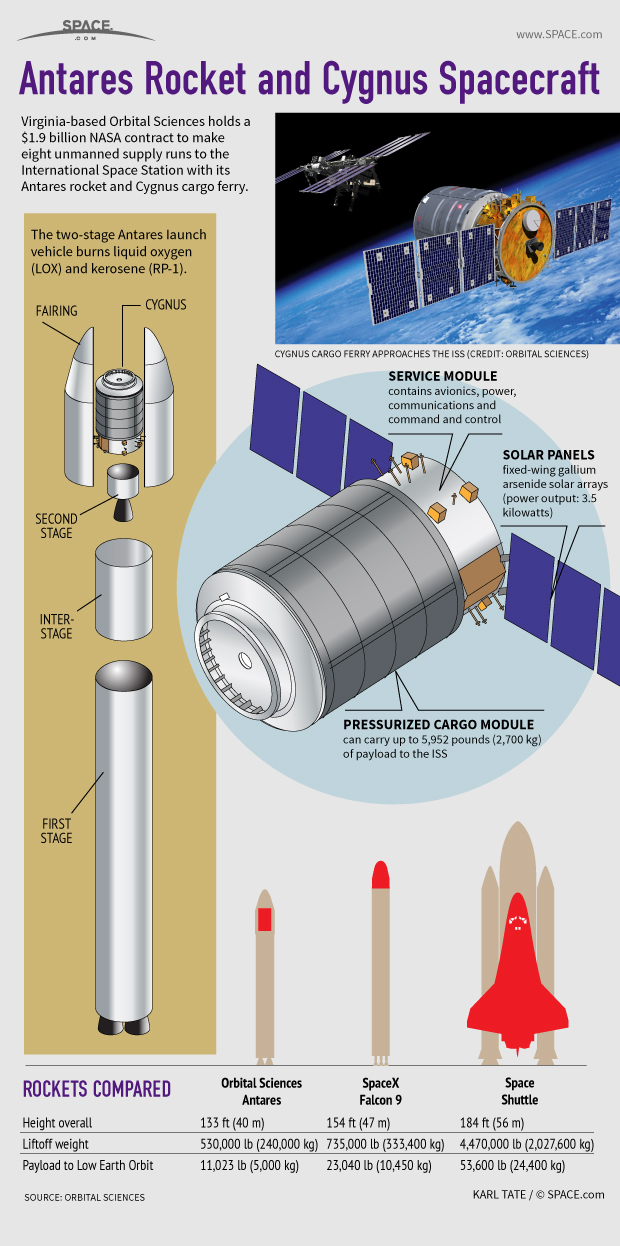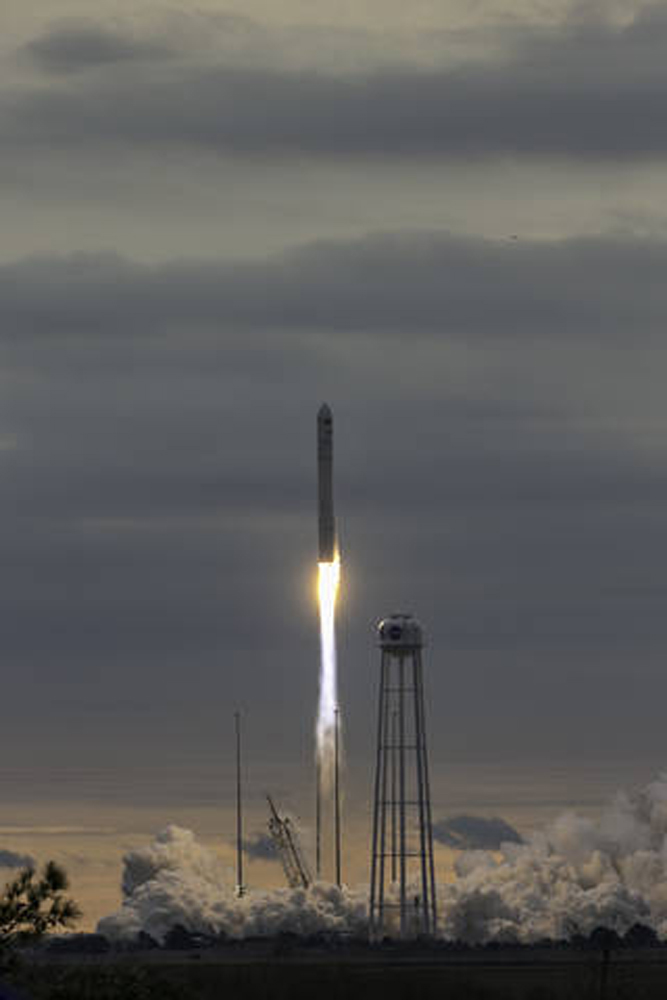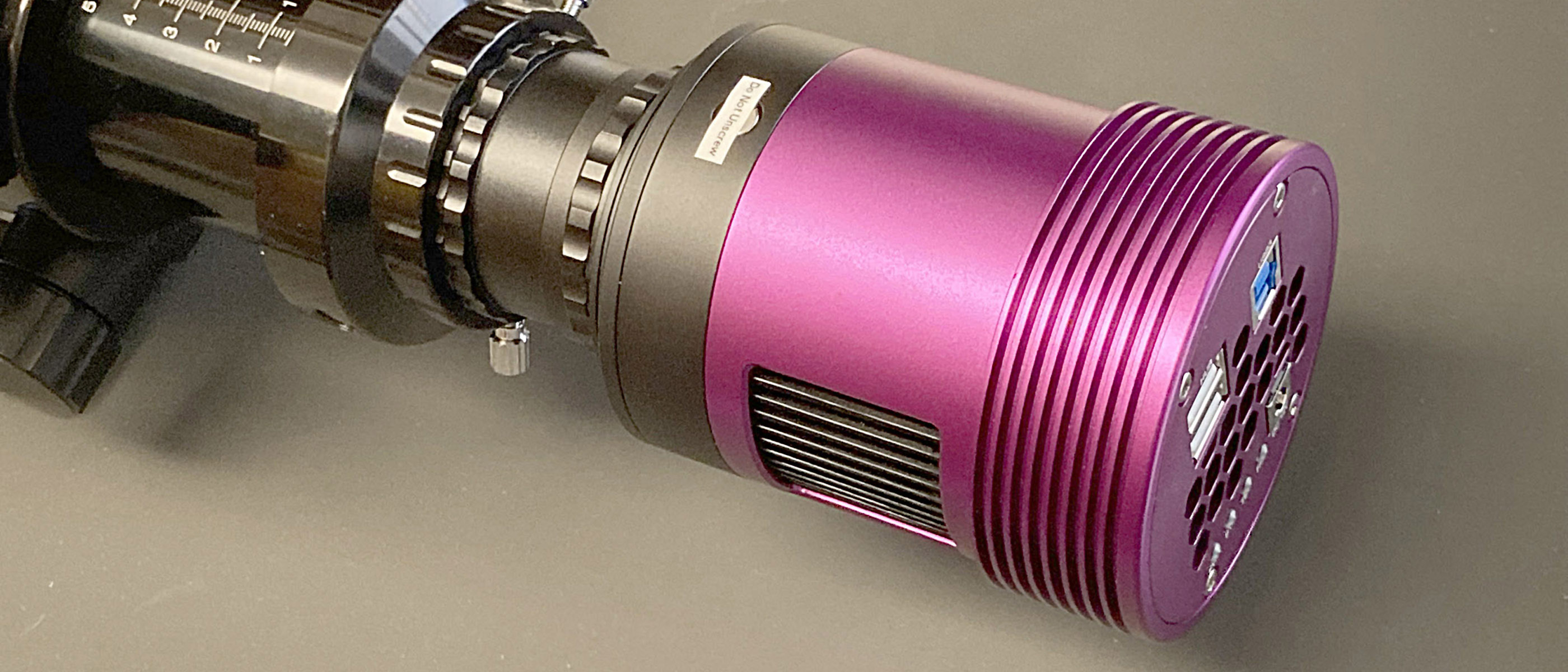Northrop Grumman Space Systems: One of NASA's top contractors
Reference article: Facts about Northrop Grumman's Space Systems sector.

Northrop Grumman Space Systems is the space sector of the Northrop Grumman Corporation, an American aerospace and defense technology company. The Space Systems sector provides space technology and launch systems for government and commercial clients.
Northrop Grumman holds a contract with NASA to fly unmanned cargo missions to the International Space Station (ISS). The predecessor to the company's Space Systems sector was formed in 2018, but the company has an extensive history in the aerospace industry.
Company history
Northrop Grumman was created when the Northrop Corporation bought Grumman Aerospace in 1994. According to a company timeline, Northrop began building fighters and bombers for World War II. Grumman also built military aircraft, as well as private jets, and was the chief contractor for the Apollo lunar module.
In 2007, Northrop Grumman bought Scaled Composites, the builder of SpaceShipOne, which was the first private crewed spacecraft to reach space. Northrop Grumman also is the lead contractor for the James Webb Space Telescope that is expected to launch in 2021.
On June 5, 2018, the Federal Trade Commission approved Northrop Grumman's acquisition of Orbital ATK, a private spacecraft company with NASA contracts to deliver payloads to the ISS. Orbital ATK was renamed Northrop Grumman Innovation Systems (NGIS) until January 2020, when it was renamed as Northrop Grumman Space Systems. The company's other three sectors are Aeronautics Systems, Defense Systems and Mission Systems.
Orbital ATK was formed in February 2015 with the merger of Orbital Sciences Corp. and Alliant Techsystems (ATK). The two companies had previously worked together in many capacities, including Orbital's Antares rocket, for which ATK provided solid rocket motors for the upper stage. ATK's rocket boosters also safely delivered the space shuttles to orbit, except for one catastrophic failure in 1986 that led to the death of seven astronauts on board space shuttle Challenger. ATK made design changes to the boosters in the wake of the disaster.
Related: Northrop Grumman's private Antares rocket: 5 surprising facts
Spaceflight history
ATK was one of the contractors working on NASA's Constellation program, which aimed to carry astronauts to the moon and beyond. ATK constructed the first stage of the Ares 1 rocket that would take the astronauts aloft. The program, which was conceived under President George W. Bush, was cancelled shortly after President Barack Obama took office. (NASA has now resumed a moon-focused policy under president Trump, although it will use a rocket known as the Space Launch System to get there.)
Orbital Sciences Corp. was the original company that developed the Antares rocket and Cygnus spacecraft, designed to deliver pressurized crew supplies, scientific experiments and other unpressurized cargo to the space station. Orbital also specialized in launching small satellites.
Related: In photos: See the Antares rocket's Cygnus NG-13 cargo ship launch to space station
The company's formal relationship with NASA began in 1983 when the firm signed an agreement to build a Transfer Orbit Stage vehicle that was eventually used during a launch of the space shuttle Discovery.

In 1991, officials from Orbital signed an $80 million contract allowing NASA to use the company's Pegasus rocket to deliver small payloads into orbit. Pegasus — a winged three-stage rocket designed to fly to low-Earth orbit — was the first privately developed space launch vehicle. The aerospace firm had also signed deals with the U.S. Air Force, Japan's Broadcasting Satellite System Corporation and the Defense Advanced Research Projects Agency.
Related: What's the difference between orbital and suborbital spaceflight?
In 2008, Orbital Science signed a $1.9 billion deal with NASA that required the company to fly eight unmanned cargo missions to the ISS using Antares and Cygnus. In 2016, Orbital ATK signed a second agreement for more launches between 2019 and 2024. (The value of this second contract was not disclosed, although NASA said it is paying up to $14 billion overall for contracts awarded to Orbital ATK, SpaceX and Sierra Nevada.)
Cygnus comes equipped with two sets of solar arrays on either side of the service module. The arrays power the command control and communications hardware of the robotic capsule, once launched and deployed. The Antares rocket — formerly called the "Taurus II" — is a two-stage launch vehicle designed to deliver cargo to low-Earth orbit. When upright, the rocket is 131 feet (40 m) tall, and the rocket's dual AJ26 rocket engines are designed to provide 680,000 pounds of thrust. Antares' first test launch occurred on April 18, 2013.
Related: Orbital Science's 1st Antares rocket test flight
Prior to the merger, Orbital Sciences had a single Cygnus failure when one of its spacecraft exploded just after launch on Oct. 28, 2014, likely due to a problem with the Russian engines in Antares. Flights resumed on a United Launch Alliance Atlas V rocket in December 2015. As of mid-2018, Cygnus has made 10 flights on both the Antares and Atlas V rockets, at a pace of approximately two a year.

Future space projects
In 2019, NASA awarded Northrop Grumman with a contract to build the lunar Gateway module, based on the agency's conclusion that Northrop Grumman would be able to deliver the fastest.
The company continues to launch supplies into space for NASA, having just completed their 13th Cygnus mission in February, 2020, which carried 4 tons of cargo to the space station.
Since 2017, Northrop Grumman has been working on developing a next generation rocket called the OmegA rocket (previously known as the Next Generation Launch Vehicle). OmegA will be capable of launching payloads of up to 22,266 lbs. (10,100 kilograms) to a geostationary transfer orbit, and payloads of up to nearly 17,200 lbs. (7,800 kg) to geostationary equatorial orbits, according to Orbital ATK. The intermediate-class OmegA is targeted to make its first test launch in 2021, and a heavy-class version could follow in 2024 if all goes well.
Additional resources:
- Learn more about Northrop Grumman's Space Systems sector on their website.
- Read more about the Cygnus spacecraft from Northrop Grumman.
- Find out more about NASA's transition from Apollo to OmegA.
This article was updated on May 26, 2020 by Space.com reference editor Kimberly Hickok.
Join our Space Forums to keep talking space on the latest missions, night sky and more! And if you have a news tip, correction or comment, let us know at: community@space.com.
Get the Space.com Newsletter
Breaking space news, the latest updates on rocket launches, skywatching events and more!

Elizabeth Howell (she/her), Ph.D., was a staff writer in the spaceflight channel between 2022 and 2024 specializing in Canadian space news. She was contributing writer for Space.com for 10 years from 2012 to 2024. Elizabeth's reporting includes multiple exclusives with the White House, leading world coverage about a lost-and-found space tomato on the International Space Station, witnessing five human spaceflight launches on two continents, flying parabolic, working inside a spacesuit, and participating in a simulated Mars mission. Her latest book, "Why Am I Taller?" (ECW Press, 2022) is co-written with astronaut Dave Williams.










